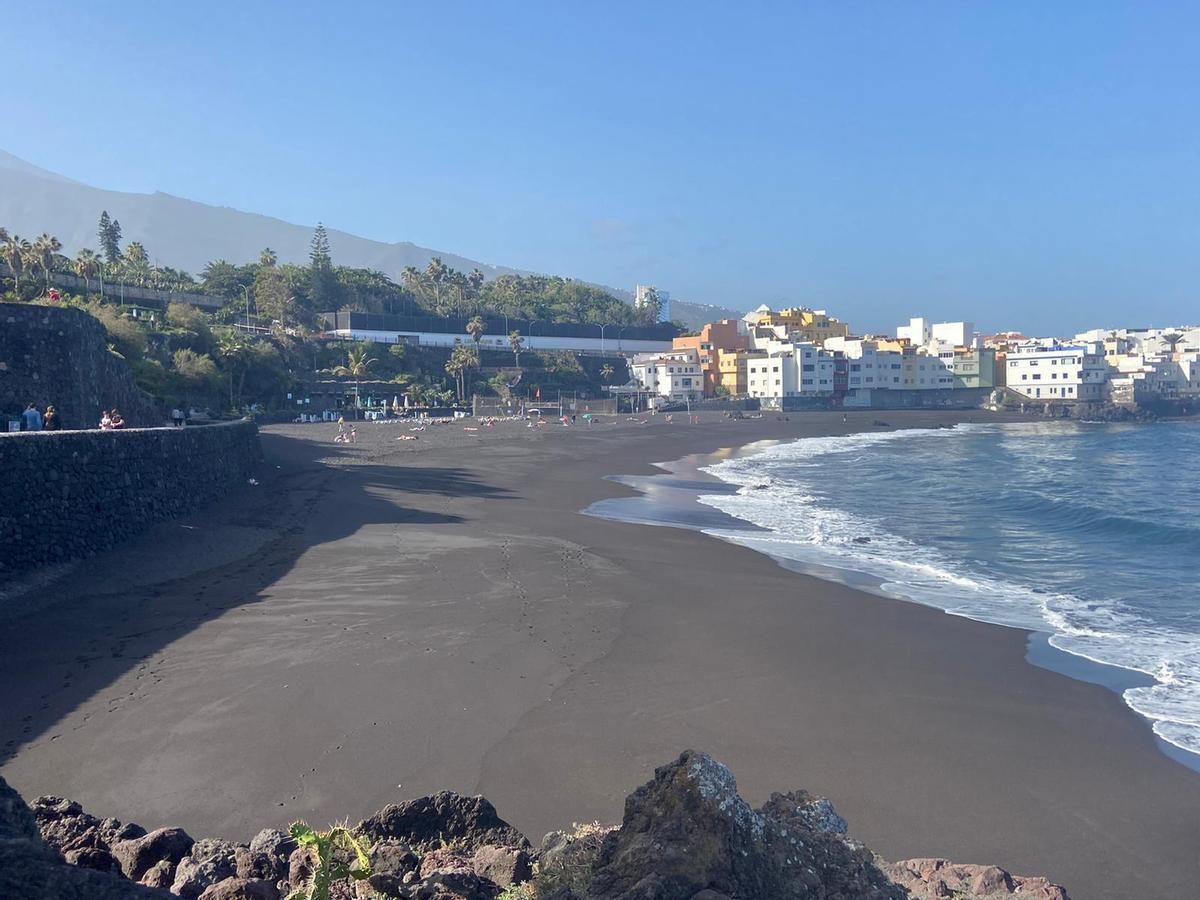Puerto de la Cruz has learned to reflect on the sea through a beach that is walked along, photographed (and now enjoyed again) all year round.
Transformed into an icon of northern Tenerife, its presence has allowed new flows of visitors and granted a new visual identity to a city birthed from the mind of artist César Manrique. He left his mark here with a harmonious integration of art and landscape, featuring paths, viewpoints, landscaped terraces, ornamental waterfalls, and endemic species.
Prior to its existence, this stretch of coastline was harsh, rocky, and greatly battered by waves. In 1993, the transformation culminated: Playa Jardín was born.
Comprehensive Action
Playa Jardín was conceived in the late 1980s as a comprehensive coastal project. It was agreed to create a large beachfront that, alongside a stable sandy area, would incorporate promenades and green spaces.
The technical team designed a lateral breakwater and protection works to mitigate the northern waves. Based on this, the coastal profile was shaped, volcanic sand was added and spread, and three sections were configured (Castillo, Charcón, and Punta Brava).
In parallel, César Manrique designed the landscaped environment.

Playa Jardín. / ED
Manrique’s Vision
Manrique’s intervention was more than merely “adding sand”: it involved creating a large coastal garden with terraces, pathways, and volcanic stone features that cushion the transition between the city and the ocean, adhering to his philosophy of public use and dialogue with the environment, a natural extension of the language of Lago Martiánez.
The resulting beach is black and volcanic, featuring a promenade that connects children’s areas, cafes, and a small bandstand for performances.
For the municipality, Playa Jardín was (and continues to be) both a tourist and civic asset. It offers a spacious, accessible beach that is partially shielded from the northern waves, able to accommodate both residents and visitors, as well as local events.
Promotional-wise, it is one of the iconic beaches of the destination alongside Lago Martiánez and the historical centre.
Closure
This value is best perceived when it is absent. Between July 2024 and June 2025, Playa Jardín was closed to swimming due to episodes of faecal contamination (excess of E. coli / enterococci), which directly affected businesses and the daily lives of thousands of residents.
During this time, there were mutual accusations, fines for discharges, and more failures of emissaries. The reopening in June 2025 came after implementing tertiary treatment in the Punta Brava wastewater treatment plant and measures to reduce discharges into the sea.
A Key Note
The closure is explained by sources of contamination (sewage failures and discharges), not because the beach is “artificial”.
However, most studies indicate that protected or partially enclosed beaches, like those shielded by breakwaters, tend to have slower water renewal, which may prolong the persistence of bacteria if there is an entry point (rainwater, emissaries, leaks).
In other words: they do not cause the problem, but they can retain it for longer when the purification/discharge system fails.
For the city, having Playa Jardín open and safe is as much a tourist issue as a structural one: it affects its attractiveness, local economy, and the everyday use of a public space that is part of the identity of Puerto de la Cruz.
















